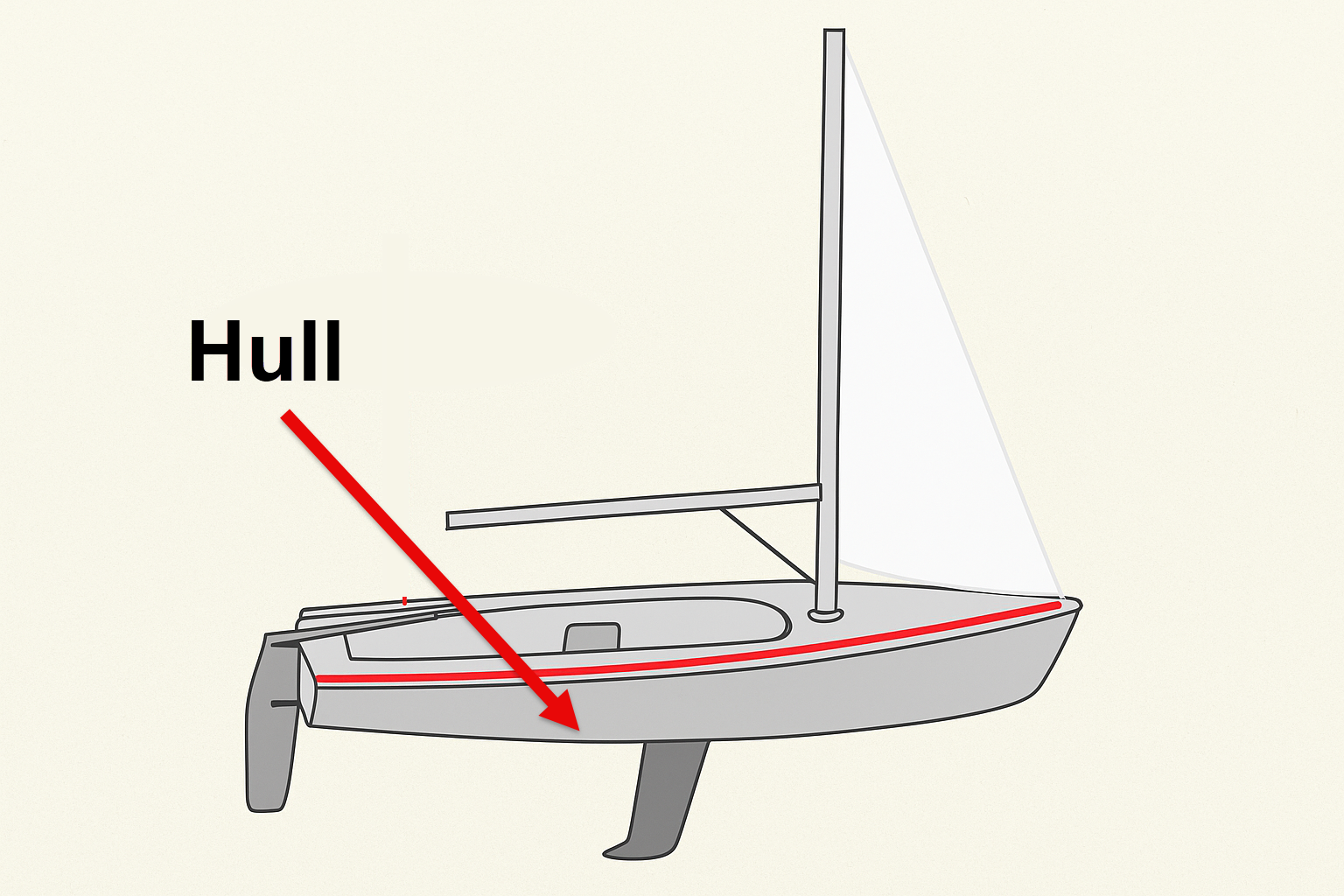Hull: The Main Body of the Boat
Definition: The hull is the main body of a boat, providing the structure that keeps the boat afloat. It encompasses the bottom, sides, and deck, and is the most critical component of the vessel's design and functionality.
Understanding the Hull: In sailing and boating, the hull is what allows the boat to float and move through the water. It is designed to provide buoyancy, stability, and resistance to water. The shape, size, and design of the hull greatly influence a boat's performance, including speed, handling, and stability. Hulls can be made from various materials, including fiberglass, wood, aluminum, and steel, depending on the type of boat and its intended use.
Types of Hulls:
Displacement Hull: Designed to push through the water, providing a smooth and stable ride, typically found on cruising sailboats and large yachts.
Planning Hull: Designed to ride on top of the water at higher speeds, commonly found on powerboats and performance sailboats.
Multihull: Boats with two (catamaran) or three (trimaran) hulls, offering greater stability and space compared to a monohull.
Applications in Sailing:
Buoyancy: The hull is responsible for keeping the boat afloat by displacing water. Its design ensures the boat remains stable and balanced in various conditions.
Protection: The hull protects the interior of the boat from water and other elements, providing a dry and secure environment for the crew and equipment.
Performance: The hull's shape and design directly impact the boat's speed, maneouverability, and ability to handle different sea conditions.
Examples of Usage:
"The hull of the sailboat is made of fiberglass, offering durability and a smooth finish."
"Inspect the hull regularly for any signs of damage or wear."
"The boat's hull design allows it to perform well in both light and heavy winds."
Visual Representation:
Image Description: Diagram of a sailboat highlighting the hull, with labels indicating the different parts such as the bow, stern, and keel.
Importance in Sailing: The hull is the foundation of any boat, determining its seaworthiness, stability, and overall performance. Understanding the design and maintenance of the hull is essential for safe and efficient boating, whether in calm rivers or rough seas.
Related Terms:
Keel: A fixed or retractable fin located along the bottom of the boat that provides stability and prevents sideways drift.
Deck: The flat surface on the top of the hull, where the crew operates the boat.
Bow: The front end of the hull.
Stern: The rear end of the hull.
Conclusion: The hull is the main body of the boat, providing the essential structure that supports all other components and ensures buoyancy and stability. Proper understanding and maintenance of the hull are vital for any sailor or boater, as the hull's condition directly affects the boat's safety and performance on the water.
